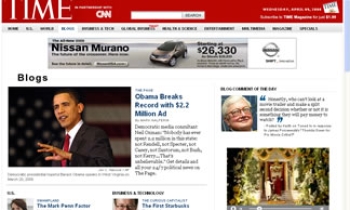The 118-year-old Wall Street Journal newspaper is the big prize in Rupert Murdoch’s attempted acquisition of the Dow Jones group. The world’s most prestigious financial publication has 2.6m print and online subscribers and the second highest circulation of any newspaper in the US.
The Journal is considered the newspaper of record for the business world. Founded in 1889 by Charles Dow, Edward Jones and Charles Bergstresser, the title was bought by its Boston correspondent Clarence Barron in 1902.
His descendants, the Bancroft family, now control 64% of the company and Murdoch has been battling to secure their approval for his $5bn (£2.5bn) offer.
Dow Jones’s group revenue was up 17.9% year on year to $507.2m for the first quarter of 2007, bolstered by the acquisition of business information service Factiva and the growth of some online and financial index services. The company’s strategy is to decrease its reliance on print products, which are being hit by declining advertising revenue.
Dow Jones Online, meanwhile, has seen advertising revenue increase by 30% from the first quarter of 2006 to the same period in 2007, while the Wall Street Journal Online saw a 20% increase in subscribers and Barron’s Online a 49.2% increase in subscribers.
The Wall Street Journal’s paid online subscriptions are regarded with some envy by rival web publishers, most of which have struggled to introduce similar paid access services without culling their web traffic figures. WSJ Online has 931,000 paid subscribers and is the world’s largest paid-subscription website.
Other products in the consumer media sector include Wall Street Journal editions for Europe and Asia, which have circulations of 12,384 and 80,514 respectively; the Sunday edition, with a circulation of 9.1m in the US; and the educational edition Wall Street Journal Classroom, which has a circulation of 150,000. The WSJ brand also extends to radio production through a 27-year old operation supplying business news to 280 local US stations.
The weekly Barron’s magazine, founded in 1921, has a paid circulation of 300,017 and complements WSJ’s breaking news focus market analysis. Barron’s website is subscription-only, unlike the WSJ, which offers some access for free.
Financial news and information site MarketWatch offers free membership; it was acquired by Dow Jones in 1995, making the company the largest online financial and business news publisher.
Dow Jones’ first venture into the Asian market was with an initial 40% stake in the Far Eastern Economic Review in 1973. The title now has a distribution of 20,000 across Asia, Europe and the US.
Across its Enterprise media group, Dow Jones publishes 12,000 newswire reports each day to around 435,000 readers, and newly-acquired business information service Factiva has 1.8m paying subscribers. Dow Jones also operates Indexes, Financial Information Services, Reprint & Permission Services and Client Solutions divisions with related events and conferences.
In local media, Dow Jones’ Ottaway sector publishes eight daily and 14 weekly newspapers in the US with a combined circulation of 281,000, though the company recently sold six community newspapers.
Its joint ventures include the personal finance title SmartMoney with Hearst magazines, Russian finance site Vedomosti with the Financial Times’ parent company Pearson and Independent Media, and the customisable stock market tool STOXX with Deutsche Boerse and SWX Group.
Dow Jones’s activity over the last 12 months gives a clear indication of the group’s priorities: the acquisition of eFinancial News, the announcement of a new online personal finance title as a joint venture with IAC/Interactive Corp, and the completion of the takeover of Factiva, which has 45% of its business and staff based outside the US. Its focus is on expanding online and through business index services.
Dow Jones’s consumer media division generated nearly three times the revenue of the enterprise sector for the 2006 financial year: $1.123bn compared with $408m. Local media accounted for $252m.









